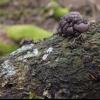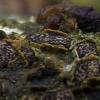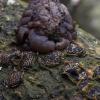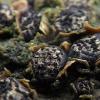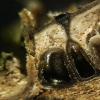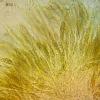
15-11-2025 23:22
Mario FilippaHello,this is what I think to be Hymenoscyphus mac

14-11-2025 16:26
 Marian Jagers
Marian Jagers
Hello everyone, On dead wood of Cytisus scoparius

15-11-2025 20:25
 Riet van Oosten
Riet van Oosten
Hello, Found by Laurens van der Linde, Nov. 2025

14-11-2025 18:31
 Lothar Krieglsteiner
Lothar Krieglsteiner
Hello,can somebody provide me with a file of:Rothe

12-11-2025 09:25
 Viktorie Halasu
Viktorie Halasu
Hello, I need help with a pale terrestric Pseudom

11-11-2025 20:16
Bohan JiaHi, lastly I have found these tiny yellow decayin

09-11-2025 13:20
Hello.A tiny ascomycete, appearing as erupting gra
A few days ago I found on the branch Quercus, Tremella moriformis. Basically fruiting bodies immature and I could not find spores but other characteristics show that this is the species.
As you know, Tremella are parasitic species. And that's what I have a problem with. I would like to determine on which mushroom it parasites, but my knowledge about them is in this case insufficient :(
I was looking among Diatrype. However, the spores do not match any of the species. In fact, 99% of spores have a length slightly below 5µm and their width does not exceed 1µm.
In the picture only a few examples of measurements but in fact I measured a much larger number of spores.
Is it possible that I measure immature spores. I took a sample from the sporocarps or maybe you need to print spores ???
I was not able to observe the reaction to iodine. I tried directly in Lugol and after previous treatment with a KOH sample. In both cases negative.
Thank you in advance for any hints
Mirek
Hi Mirek,
Asci seem multispored. Please see within Diatrypella genus, especially compare to D. quercina.
Alain
Oh yes, asci are multispored :)
Still wondering about the small size of the spores?
Thank you and best regards
Mirek
Eduard
Yes, Eduard, you're right. I haven't precisely searched.
Alain
However, with my little knowledge about these mushrooms species I can not determine. None of the species described match my.
Diatrypella intermedia should have short asci. In my asci they are long so it's probably also not this species?
I am also posting a photo with the samples of dimensions.
Judge for yourself.
I will try to get other samples from Quercus. After the storm in 2016, a lot of substrate remained in the forest. Until now, old Quercus have remained broken in the forest.
Regards
Mirek
Microscopic features identical to those in the collection presented above. Therefore, I ask myself if I did everything right. All features match except ascus length. Or maybe I'm measuring wrong? Do we measure the total length of ascus at Diatrypella? I met in some descriptions where the length of the base is given separately. Are we therefore only measuring the part containing the spores?
If so, these collections would match D. intermedia!
Mirek
The length of asci with long stipes are often given “p. sp.” which means that the length refers to the (wide) part with the spores. That makes sense because such long stipes are often broken and seldom complete.
Eduard
Oh yes you are right!
My knowledge of foreign languages is poor and that is why I sometimes ask silly questions.
I reviewed the materials on D. intermedia again and it turns out that Von Larissa N. Vasilyeva gives the length of ascus without stem for this species: "
pars sporifera des Ascus nur 35-40 um lang; ".
So mine fit into this genre.
Thank you very much
Mirek
